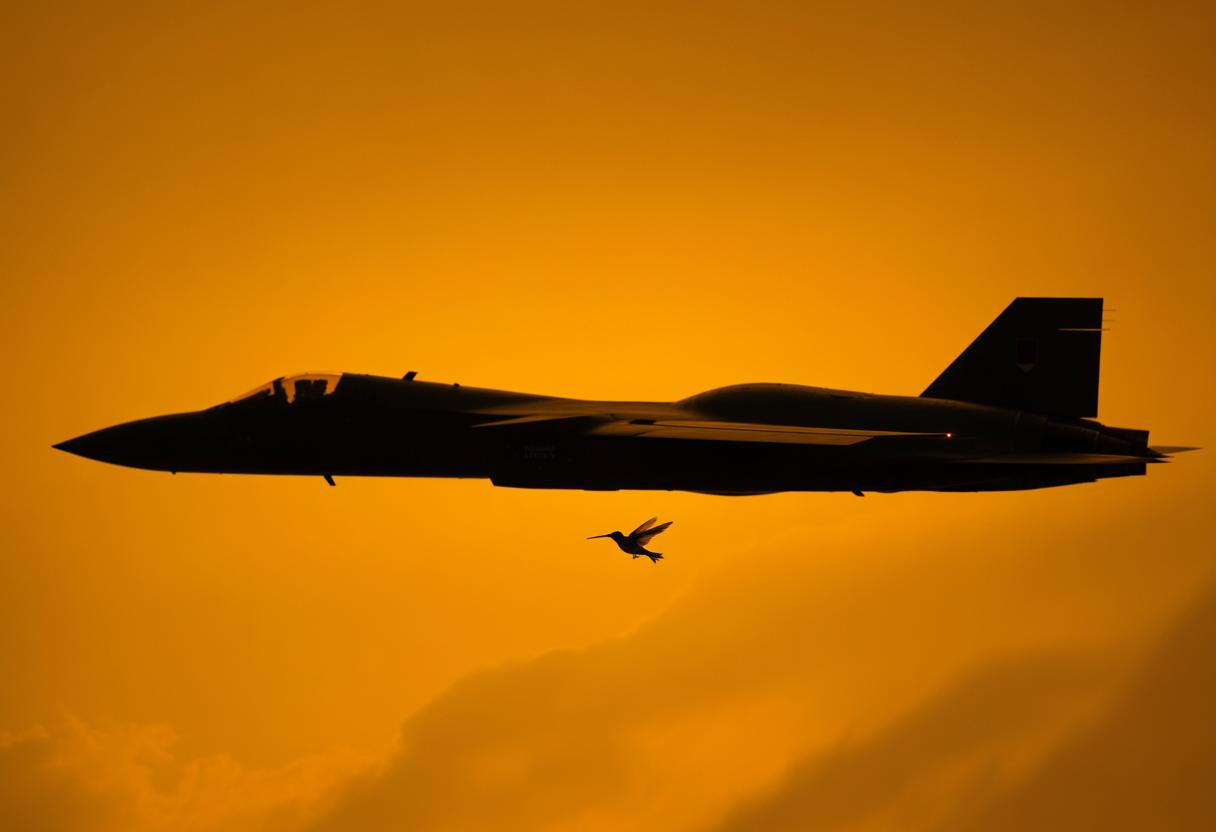The Pentagon’s latest stealth bomber isn’t just another military aircraft—it’s a strategic revolution that makes America’s $2 billion B-2 Spirit look like an expensive antique. The B-21 Raider, at just $750 million per unit, delivers superior stealth capabilities while costing 62% less than its predecessor. This isn’t just about saving money; it’s about fundamentally reshaping how air warfare works in the 21st century.
Military analysts are calling it the most significant leap in bomber technology since the dawn of stealth aviation. With production ramping up and three test aircraft already flying, the B-21 represents a complete reimagining of strategic airpower.
Why the B-21 makes previous stealth technology obsolete
The B-21 Raider employs what defense engineers call “broadband stealth technology”—a quantum leap beyond the B-2’s capabilities. While the B-2 was designed primarily to evade high-frequency engagement radars, the B-21 defeats both low-frequency surveillance systems and high-frequency targeting radars simultaneously.
This technological breakthrough stems from three key innovations: advanced radar-absorbent materials tailored for multiple frequency ranges, a blended-wing design that eliminates virtually all radar-reflective surfaces, and integrated cockpit windows that eliminate traditional seams. The result? A radar cross-section potentially smaller than a hummingbird across all detection frequencies.
Even Russia’s vaunted S-400 and S-500 air defense systems, which claim anti-stealth capabilities, would struggle to maintain target locks on the B-21. While they might detect its general presence using low-frequency radar, achieving the precise tracking needed for missile engagement remains virtually impossible.
The economics of stealth superiority
The cost difference between the B-21 and B-2 tells a remarkable story about technological advancement. How a $750 million stealth bomber makes the Pentagon’s $2 billion model completely obsolete becomes clear when examining production scale and material science breakthroughs.
The B-2 program produced only 20 aircraft, spreading development costs across a tiny fleet. The B-21 will see 100+ units manufactured, dramatically reducing per-unit costs while incorporating 30 years of materials science advancement. Advanced composite structures reduce both weight and maintenance requirements, creating lifecycle savings that compound over decades.
Revolutionary capabilities that change everything
Network-centric warfare integration
The B-21 isn’t just a bomber—it’s a flying command center capable of directing entire battle networks. Through advanced sensor fusion and real-time data processing, it can coordinate F-35 fighters, drones, and ground assets across contested airspace. This capability transforms the B-21 from a single-mission platform into a multi-domain warfare orchestrator.
Military strategists compare this integration to cutting-edge sensor technology that allows forces to see through traditional battlefield obscurants, giving commanders unprecedented situational awareness.
Unmanned operations capability
Perhaps most remarkably, the B-21 can operate completely unmanned when missions require it. This dual-mode capability allows commanders to deploy the aircraft in extremely high-risk scenarios without endangering aircrew, while retaining human oversight for complex decision-making when needed.
Global implications that reshape military balance
The B-21’s 6,000-mile range means it can strike virtually any target globally from secure bases, fundamentally altering strategic calculations worldwide. Unlike previous bombers that required forward deployment to contested regions, the B-21 can operate from the continental United States while reaching targets across the Pacific or Atlantic.
This capability forces adversaries to defend everywhere simultaneously, spreading their air defense resources thin across thousands of potential targets. The psychological impact mirrors America’s massive naval power projection capabilities, where the mere presence of overwhelming force shapes international behavior.
China and Russia are already responding by accelerating their own stealth programs and developing AI-driven defense networks. However, the B-21’s technological lead may prove insurmountable for years, if not decades.
What this means for the future
The B-21 Raider represents more than technological advancement—it’s a strategic paradigm shift that maintains American air superiority through 2050 and beyond. By combining unmatched stealth, global reach, and network-centric capabilities at a fraction of previous costs, it ensures the United States retains the ability to project power anywhere, anytime.
As the first B-21s enter service in 2027, they’ll fundamentally change how military planners think about air warfare, making previous generation platforms—no matter how expensive—suddenly obsolete.
